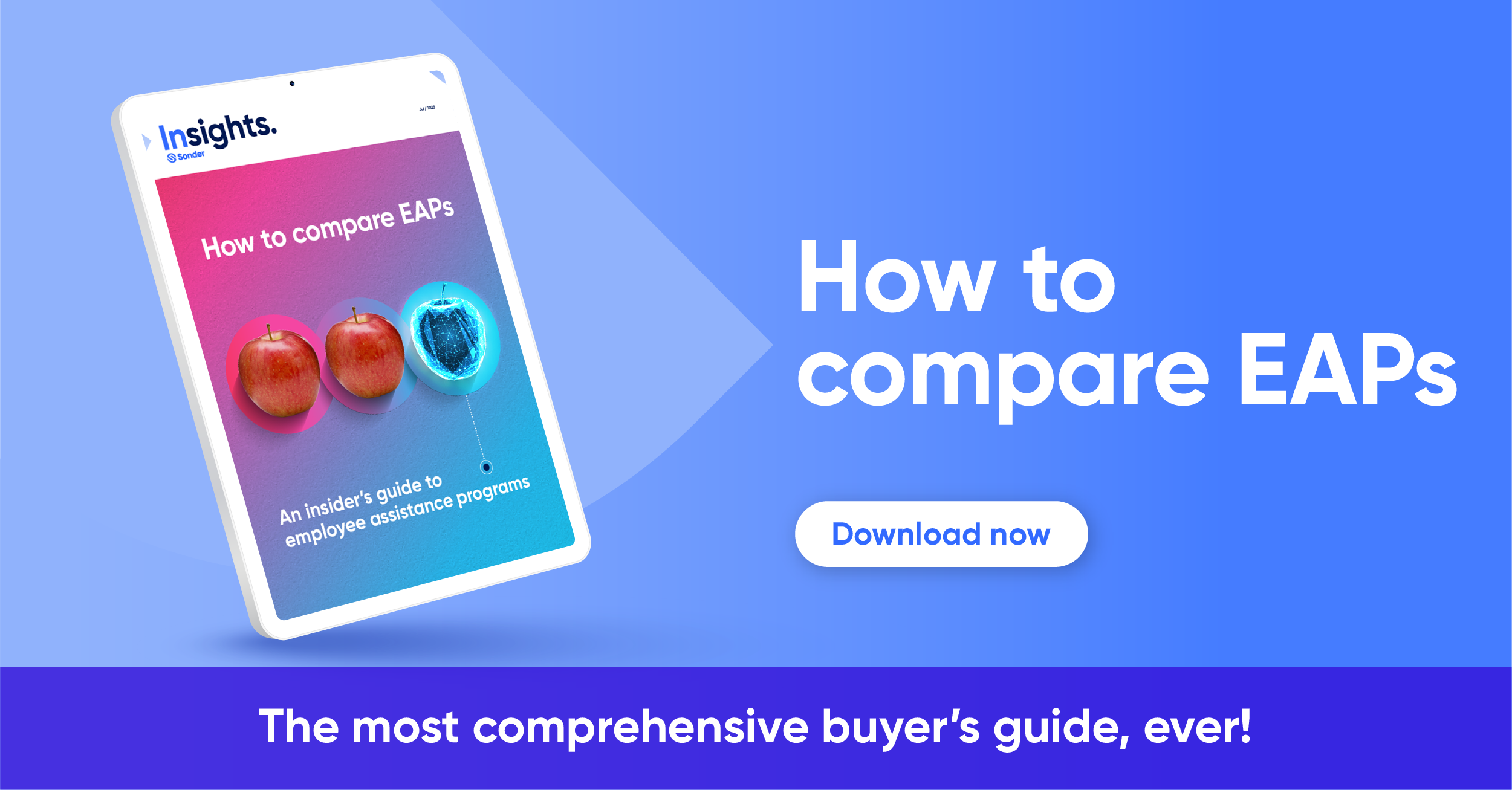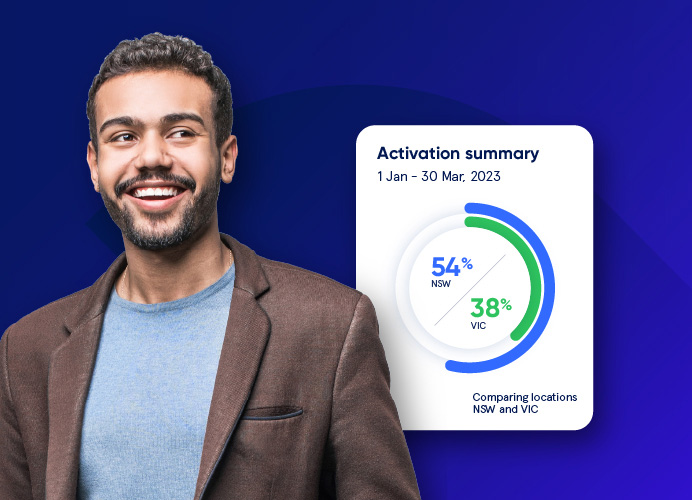What is a ‘good’ EAP uptake rate?

Insights.
Every day at Sonder, we're asked what a 'good' utilisation rate looks like for an employee support program (EAP). Even though we're not an EAP - we're an EAP alternative with a much broader safety, medical, and mental health offering - we appreciate that HR buyers want to compare us to their existing EAP statistics, so we're always happy to answer the question and provide supporting data and references.
Historically, employee uptake of EAPs has been around five per cent. This is disappointing because a wellbeing support program can only deliver results if employees use it.
With this in mind, people leaders are increasingly demanding evidence to prove employee utilisation rates. These heightened HR expectations align with:
- A rise in employee expectations. Now more than ever, employees want their employers to step up and share the responsibility for their wellbeing. For many, their health and safety depend on it. If they cannot talk to a doctor in a medical emergency, speak with a psychologist or clinician when they are feeling suicidal, or access family and domestic violence (FDV) leave when their situation at home has become untenable, their lives can be at risk.
- A rise in senior executive interest. Leaders need employees to be safe and well because organisations are losing millions of dollars each year in absenteeism, presenteeism, workers' compensation, employee turnover, and the ripple effect of lost productivity from colleagues and family members.
This blog post shares three reasons for the traditionally low uptake of EAPs, as well as statistics about the average EAP utilisation rate and real-life case studies.
Reasons for low employee uptake of EAPs
For a long time, EAPs have been criticised for low employee uptake. To be fair, it's not all their fault. The onus has also been on employers to share responsibility for building a culture of active care, choose the right solutions, and integrate wellbeing into day-to-day activities.
That said, we propose that the following key reasons (most dot points are taken from our joint report with PwC Australia) have contributed to the low employee uptake of EAPs:
![EAP - 3 reasons for low uptake of EAPs - employee assistance programs [Sonder] 3 reasons for low employee uptake of EAPs](https://sonder.io/wp-content/uploads/2023/09/EAP-3-reasons-for-low-uptake-of-EAPs-employee-assistance-programs-Sonder.png)
What is the average EAP utilisation rate?
The average utilisation rate for EAP services across Australia, the United Kingdom, and the United States is typically quoted as around five per cent.
However, these figures do not account for:
- Higher utilisation rates with EAP alternatives
- EAP alternatives (such as Sonder) - which often enjoy higher utilisation rates - do not currently have their figures included in EAP industry figures.
- Industry differences
- According to the Productivity Commission, some sectors see a lower average utilisation rate (e.g. retail trade, construction, and manufacturing), and other sectors see a higher average utilisation rate (e.g. financial and insurance, government, and utilities).
- COVID-19-related spikes
- Health providers and counselling helplines reported a rise in the use of their services when the COVID-19 pandemic upended lives and incomes.
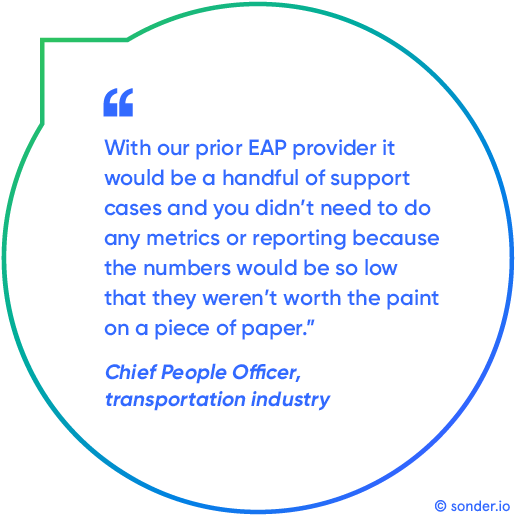
What is the best-practice uptake rate of EAP services (or EAP alternatives)?
Anecdotally, a best practice uptake rate for EAP services (or EAP alternatives) is much higher, but it's difficult to nail an average figure across different providers. However, based on what we see at Sonder, our customers typically have an employee utilisation rate of around 40+ per cent.
A few Sonder customer examples include:
- Best&Less went from three employees to 146 employees reaching out for support in one month by changing to an EAP alternative.
- Probe CX went from a three per cent to a 51 per cent employee uptake over three months by switching to an EAP alternative.
- Woolworths Group found that 56 per cent of their employees who reached out for help would not have sought support at all without the EAP alternative they provided.
Some of the reasons for our high utilisation rates include our holistic wellbeing model, broad offering, proactive approach, and one-stop-for-help model which improves employee recall of where to go for support when they need it and helps build employee trust across all of the services offered.
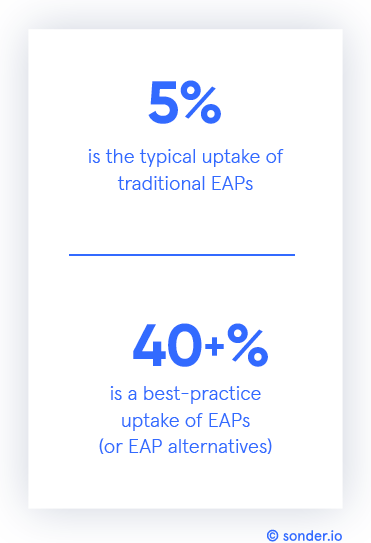
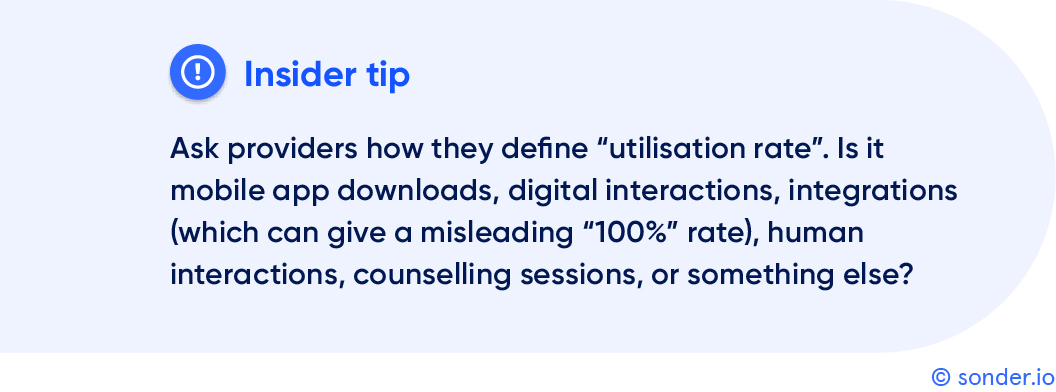
How is Sonder different from an EAP?
Sonder is an EAP alternative. We combine mental health support with safety and medical support. We also combine on-demand technology with 24/7 human expertise. Perhaps it's best explained in our video here:

Want to learn more?
For more information about how Sonder can help you rethink your employee and/or student support, we invite you to contact us here.
Download our deep-dive report
Today's blog post shares excerpts from our new 'How to compare EAPs' guide, which we invite you to download here. This insider's guide to employee assistance programs will help you:
- Define a typical EAP offering
- Summarise why employee uptake has been low
- Discover what makes EAP alternatives different
- Learn how to compare vendor offerings
- Gain insider tips and statistics
- Write a convincing business case
About Sonder
Sonder is an Active Care technology company that helps organisations improve the wellbeing of their people so they perform at their best. Our mobile app provides immediate, 24/7 support from a team of safety, medical, and mental health professionals - plus onsite help for time-sensitive scenarios. Accredited by the Australian Council on Healthcare Standards (ACHS), our platform gives leaders the insights they need to act on tomorrow's wellbeing challenges today.
Related posts
There's so much more to share
Sonder is reimagining health, safety and wellbeing support. Sonder proves human centric care leads to earlier intervention. Sonder impacts one person at a time to drive meaningful change across an organisation. Sonder understands people and how to support them.

